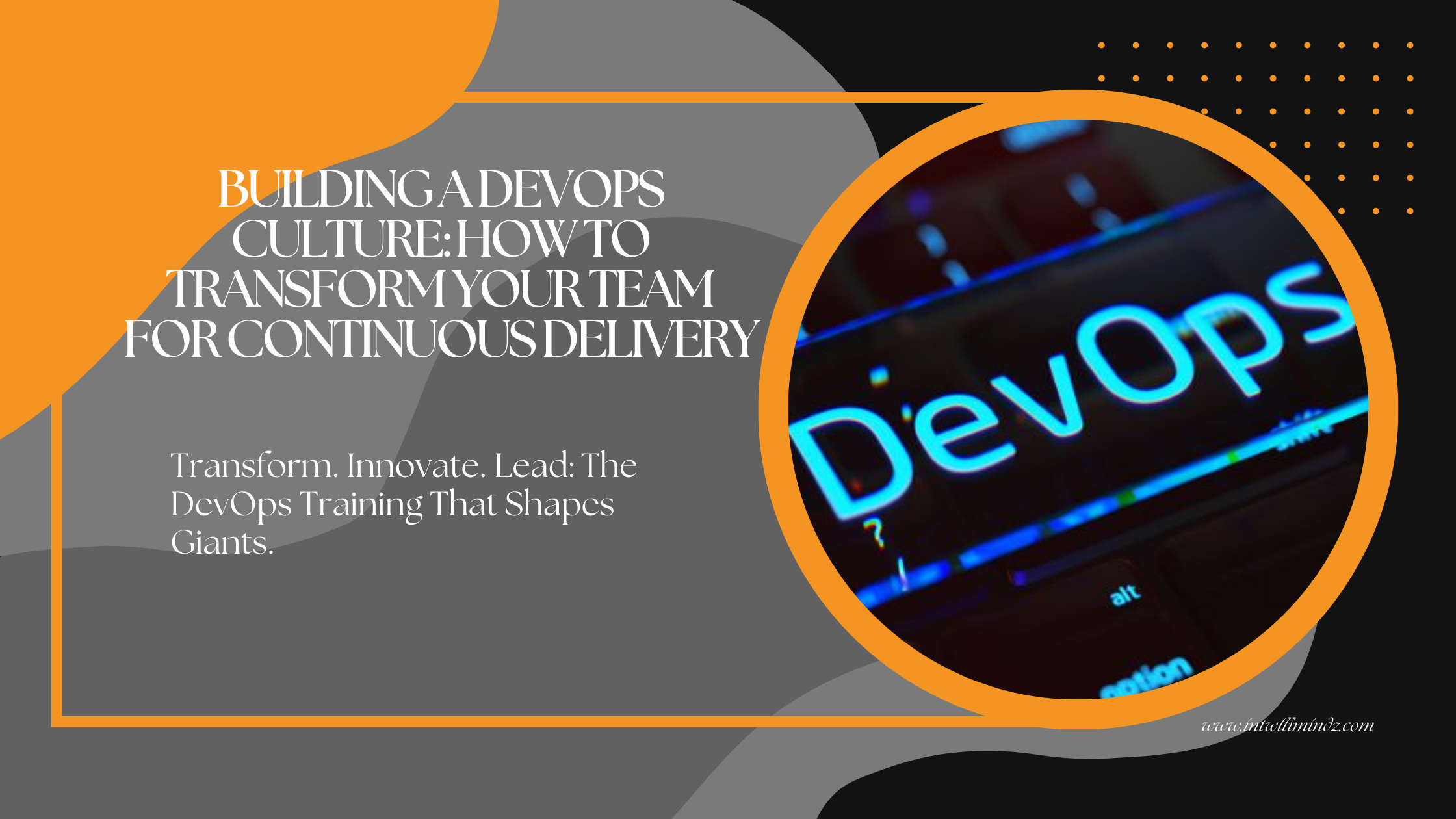From Code to Cloud: DevOps in Action
In today’s digital age, delivering software quickly and reliably is critical. That’s whereDevOps DevOps steps in, turning traditional software development upside down and streamlining the entire process from code creation to cloud deployment. But what does this journey look like? How does DevOps turn an idea into a functioning app in the cloud?
Let’s take a closer look at how DevOps works in action, following the path from code to cloud.
Step 1: Writing Code and Version Control (Git)
Every journey begins with writing the code. In the DevOps workflow, developers work in collaboration using version control systems like Git. Git enables multiple developers to work on different features at the same time while tracking changes and ensuring they don’t overwrite each other’s work.
How It Works: Developers create “branches” in the code repository, work on their feature, and then merge the changes back into the main codebase. This collaborative effort ensures that the development process is organized and efficient.
Tool Example: GitHub or GitLab for version control and collaboration.
Step 2: Continuous Integration (CI)
Once the code is written, it needs to be tested to ensure that it integrates smoothly with the existing system. This is where Continuous Integration (CI) comes in.
How It Works: Every time a developer pushes code to the main branch, automated tests run to check the code for errors, bugs, and compatibility issues. If there are any problems, the developer is notified, and they can fix the code before it progresses further.
Why It’s Important: CI helps catch bugs early and ensures the codebase remains stable. It also saves time by eliminating the need for manual testing.
Tool Example: Jenkins, Travis CI, or GitLab CI for automated testing and integration.
Step 3: Continuous Delivery (CD)
After the code passes integration tests, it’s time to deploy it. This brings us to Continuous Delivery (CD), which automates the deployment process.
How It Works: In Continuous Delivery, the system automatically prepares the code for deployment, creating a build that can be easily rolled out to production or staging environments. Although the final deployment might still need manual approval, the process up to that point is fully automated.
Why It’s Important: CD ensures that the code is always in a deployable state. It reduces the time between writing the code and releasing it into production, allowing for faster feature updates and improvements.
Tool Example: Jenkins, CircleCI, or GitLab CI/CD pipelines for automating delivery.
Step 4: Containerization (Docker)
Now that the code is ready for deployment, the next challenge is ensuring that it runs consistently across different environments (development, testing, and production). Enter containerization with Docker.
How It Works: Docker packages the application and all its dependencies into a “container,” which is a lightweight, standalone unit. This container can run anywhere—whether on a developer’s laptop, a testing environment, or in the cloud—ensuring the app behaves consistently.
Why It’s Important: Containers solve the “it works on my machine” problem by providing a consistent environment, regardless of where the app is deployed.
Tool Example: Docker for creating and managing containers.
Step 5: Orchestration (Kubernetes)
When dealing with large-scale applications that require multiple containers, managing them manually becomes overwhelming. That’s where Kubernetes comes in—a tool that automates container orchestration.
How It Works: Kubernetes manages and scales containers across multiple servers. It automates tasks like scaling applications up or down based on demand, balancing loads, and managing networking between containers.
Why It’s Important: For large-scale applications, Kubernetes ensures that the app runs smoothly, can scale efficiently, and can handle increased user traffic without downtime.
Tool Example: Kubernetes for container orchestration and management.
Step 6: Cloud Deployment (AWS, Azure, Google Cloud)
With containers managed and orchestrated, it’s time to deploy the application to the cloud. Cloud platforms like AWS, Azure, or Google Cloud provide the infrastructure needed to run the application at scale.
How It Works: The cloud platform hosts the containers, providing resources like computing power, storage, and networking. Using Infrastructure as Code (IaC) tools like Terraform, DevOps teams can automate the provisioning of cloud infrastructure, making it easier to scale the application as needed.
Why It’s Important: The cloud offers flexibility, scalability, and cost-efficiency. Businesses can deploy their applications globally, handle traffic spikes, and only pay for the resources they use.
Tool Example: AWS for cloud infrastructure, Terraform for automating infrastructure provisioning.
Step 7: Monitoring and Feedback
Once the application is live in the cloud, the job isn’t done. Continuous monitoring is essential to ensure everything runs smoothly. Monitoring tools provide insights into the app’s performance, system health, and user behavior.
How It Works: Monitoring tools like Prometheus or Grafana track performance metrics, alerting the team if something goes wrong. Feedback loops are also created, allowing developers to use real-time data to improve the app in future updates.
Why It’s Important: Continuous monitoring ensures high availability and reliability, catching problems before they impact users. The feedback gathered helps improve the app and optimize it for future releases.
Tool Example: Prometheus and Grafana for monitoring, ELK stack for logging and analytics.
